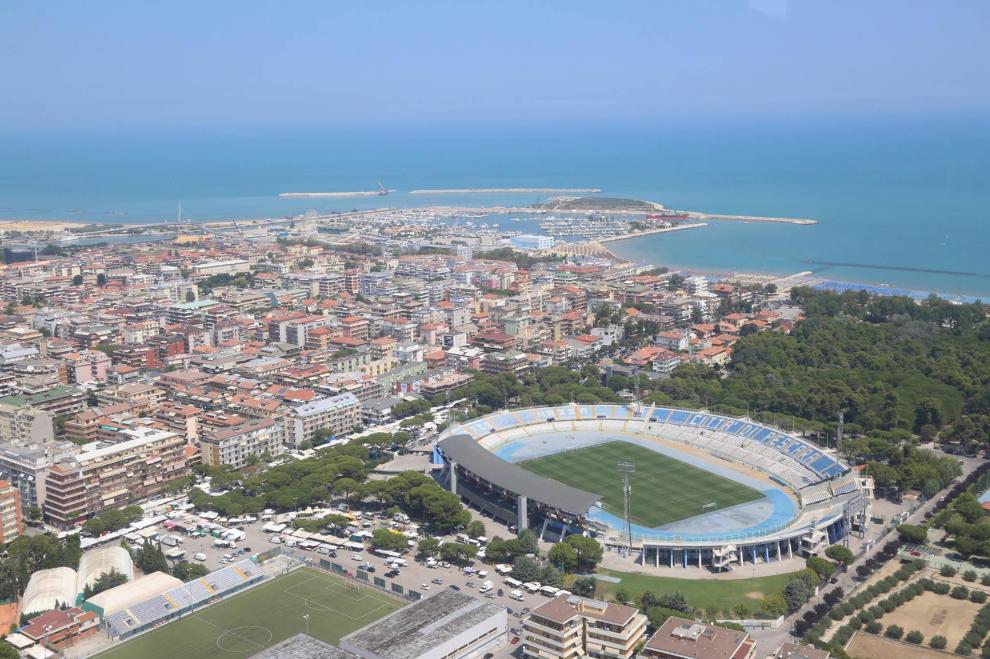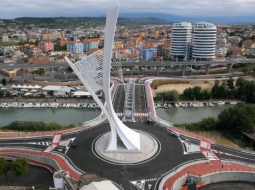Thessaloniki gets ready for its metro launch in November
The underground rapid transit lines have been under construction for almost two decades due to various project delays
 TheMayor.EU logo
TheMayor.EU logo 
In 1095 Pescara was a fishing village enriched with monuments and churches. In 1140 Roger of Sicily conquered the town, giving rise to a period in which it was destroyed by armies ravaging the Kingdom of Sicily. The name of Piscaria ("abounding with fish") is mentioned for the first time in this period. Several seignors ruled over Pescara afterwards, including Rainaldo Orsini, Louis of Savoy and Francesco del Borgo, the vicar of king Ladislaus of Naples, who had the fortress and the tower built. In the following years Pescara was repeatedly attacked by the Venetians, and later, as part of the Spanish Kingdom of Naples, it was turned into a massive fortress. In 1566 it was besieged by 105 Turk galleys. It resisted fiercely and the Ottomans only managed to ravage the surrounding territory.
At the beginning of the 18th century Pescara had some 3,000 inhabitants, half of them living in the Castellammare. In 1707 it was attacked by Austrian troops under the command of the Count of Wallis. The town resisted for two months before capitulating.
Pescara was always part of the Kingdom of Naples, apart from the brief age of the Republic of Naples of 1798–99. In 1800 Pescara fell to French troops, becoming an important military stronghold of Joseph Bonaparte's reign. Castellammare, which now had 3,000 inhabitants of its own, became a separate municipality.
In 1814, Pescara's Carboneria revolted against Joachim Murat. On 15 May 1815, the king undersigned one of the first constitutions of the Italian Risorgimento. In the following years Pescara became a symbol of the Bourbon's violent restoration as it housed one of the most notorious Bourbon jails. After a devastating flood in 1853, Pescara was liberated by Giuseppe Garibaldi's collaborator Clemente De Caesaris in 1860. Seven years later the fortress was dismantled.
In the sixty following years Pescara was included in the Province of Chieti and then merged with the adjacent town of Castellammare Adriatico and eventually became the largest city of its region. The new city received a hard blow during World War II and has since been massively rebuilt, becoming a very modern coastal city of Italy.
Source: Wikipedia
Pescara is the capital city of the Province of Pescara, located in the Abruzzo region in Italy. It is the most populated city in Abruzzo, with 119,217 residents and approximately 350,000 in the municipality (2018).
Pescara is the most populous city in the Abruzzo region, and is one of the top ten economic, commercial, and tourist centers on the Adriatic coast. Featuring a shoreline that extends for more than 20 km, Pescara is a popular seaside resort on the Adriatic coast during summer. Situated in the sea at a short distance from the waterline there are many breakwaters made with large rocks, that were placed to preserve the shore from water-flood erosion.
In the city there are the administrative headquarters of De Cecco company and the Fater S.p.a., an equal joint venture partner with the Angelini Group and Procter & Gamble.

The historic city center is located on the south shore, where once stood the Piazzaforte (fortified town), a military bulwark of the Kingdom of the Two Sicilies. There is the Bagno Borbonico (the old prison of the Kingdom of the Two Sicilies, built starting in 1510 by order of Charles V, which incorporated the remains of the Norman and Byzantine city walls). Today it houses the Museum of the Abruzzi people, which comprises 13 halls dedicated to the aspects of life, traditions and economy, 4,000 years of history of the Abruzzo people.
On the north shore of the river there's Piazza Italia (Italy Square), overlooked by the City Hall and the Government Building (which houses the headquarters of the Province of Pescara Province), both built during the Fascist era according to the fascist rationalist style and designed by the architect Vincenzo Pilotti. Mr. Pilotti designed the majority of the public buildings of the city, including the seat of the local Chamber of commerce, of the Liceo Classico "G. D'Annunzio" high school, and the old seat of the court (which now houses a museum).
In the very south part of the city, between the Nature reserve Pineta Dannunziana and the beach, there is an elegant Art Nouveau villas district designed in 1912 by Antonino Liberi. There is also the Aurum, which has been headquarters of a social club (called the Kursaal) first, then liquor factory, and today serves as public multipurpose space.
Address: Piazza Italia №1, Pescara